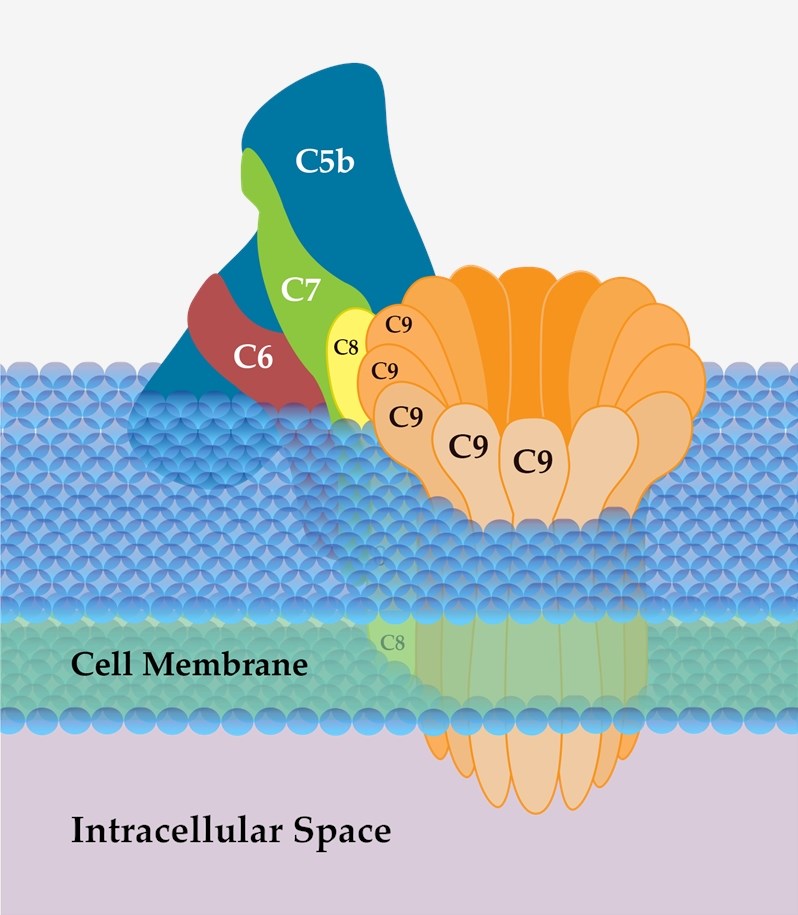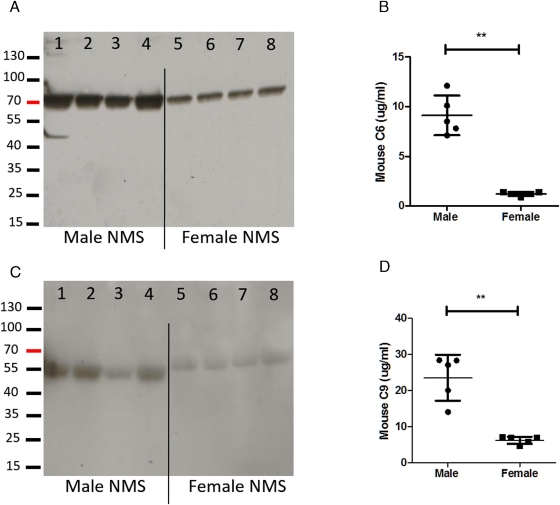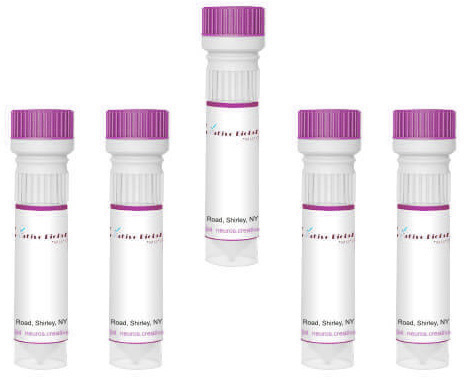Product List Background C9 Functional Service
Background
Complement C9 is a glycosylated protein with a 71KDa molecular weight and made up of a single polypeptide chain. C9 functions by binding to the C5b-8 complex and generate the mature membrane attack complex (MAC) on cell membranes. The MAC contains seven components: C5b, C6, C7, C8 (C8a, C8b, and C8g), and C9.
Three pathways of complement activation produce proteolytic enzyme complexes (C3/C5 convertases) and them enzymes cleave a peptide bond in the larger alpha chain of C5 leading to the release of the anaphylatoxin C5a and activating C5b. This is the only proteolytic step in the generation of the C5b-9 complex. Besides, not all C5b-8 complexes have complete rings of C9, usually, the C5b-9 complex has three C9 on average. However, these structures can result in lysis if enough are produced in a given cell. Completed protein rings of C9 generate the pores seen on electron micrographs and leading to the leakage of metabolites and small proteins out of the cell as well as the movement of water into the cell. This process may finally cause cell death. In addition, a previous study showed that C9 subunits of the MAC penetrate the hydrocarbon core of the lipid bilayer more deeply than any other subunit of the MAC.
 Fig.1 MAC structure.Distributed under CC BY-SA 3.0, from Wiki, without modification.
Fig.1 MAC structure.Distributed under CC BY-SA 3.0, from Wiki, without modification.
C9 Functional Service
Creative Biolabs supplies an extensive selection of C9-associated products, including anti-C9 antibodies, C9 detection ELISA kits, recombinant C9 proteins, and reporter vectors harboring the C9 gene. These meticulously engineered reagents are essential in advancing research dedicated to developing therapeutic strategies for a wide range of diseases.
 Fig.2 Assessment of C6 and C9 in murine samples via western blot and ELISA.1
Fig.2 Assessment of C6 and C9 in murine samples via western blot and ELISA.1
Experimental mouse models have played a crucial role in clarifying the complement system’s involvement in a range of diseases and injuries. Gender differences have highlighted that female mice often exhibit resistance to complement-induced injuries. Notably, early studies indicated that female mice possess low total complement activity (CH50), linked to androgen-modulated hepatic complement production. Researchers aimed to pinpoint the female-specific variations in complement systems and analyzed C3 and C9 activation in C57BL/6 mice using novel assays. Results showed normal C3 functionality in females, with significant reductions in C9 activation, suggesting terminal pathway limits. This was corroborated by lower C6 and C9 levels, with similar trends in BALB/cJ, but not CD-1 mice. These findings imply that reduced terminal pathway components may contribute to female-specific protection by impairing C5b-9 inflammation promotion.
Creative Biolabs offers a wide array of bespoke C9-functional services, which include comprehensive interaction assessments and additional functional options. These precisely designed services are crafted to assist clients in advancing their distinguished scientific investigations and clinical endeavors.
Reference
-
Kotimaa, Juha, et al. "Sex matters: systemic complement activity of female C57BL/6J and BALB/cJ mice is limited by serum terminal pathway components." Molecular immunology 76 (2016): 13-21. Distributed under Open Access license CC BY 4.0, without modification.


 Datasheet
Datasheet Fig.1 MAC structure.
Fig.1 MAC structure. Fig.2 Assessment of C6 and C9 in murine samples via western blot and ELISA.1
Fig.2 Assessment of C6 and C9 in murine samples via western blot and ELISA.1
